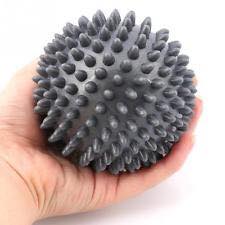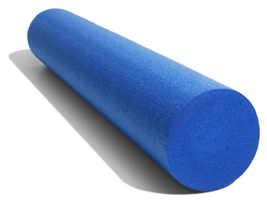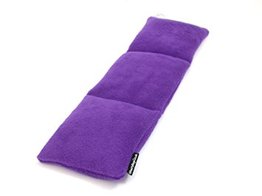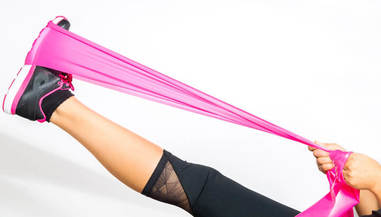|
Do you love your heat pack? Me too!
There are plenty of reasons to keep your heat pack close by, and not just because we're entering winter! Heat treatment is great for muscle pain - its cheap, effective, and drug-free! Have you ever wondered why heating your sore muscles helps them so much? Some pains are categorised as ischaemic pain - that means that the tissue has a reduction of oxygen supply which is needed for normal cell activity. This tends to happen if we're in positions that compress or over stretch areas for a long time - like sitting at a desk for a few hours without getting up to move around. Heating an area increases the local blood flow, which means the blood vessels widen to get more fresh, oxygenated blood into your muscles and joints. What kind of pain should you use heat for? Many kinds of non-inflammatory pains will respond really nicely to heat, including things like cramping and spasming, stiffness and persistent tight or pulling muscles. Heat packs are easy to use for neck, shoulder, lower back or hip pain. If you have a lot of painful areas, a warm bath can be another great way of getting heat into your muscles - why not add some Epsom salts for the added magnesium benefits for sore, tight muscles! When should you not use heat? Avoid heating up any fresh injuries, especially if you have open wounds or if the injury has become infected. These kinds of injuries will be in the inflammatory stage of healing - you'll be able to tell because the area may be swollen, red and hot, and most likely it'll be much more sensitive than usual! Of course, you do need to be careful with heat packs or hot water bottles to make sure you don't burn yourself. Always wrap your heat pack or hot water bottle in a something like a pillow case, thin blanket or a towel so you don't have the hot surface directly on your skin. Using heat for too long might give you heat rash, so I usually suggest about 20 minutes at a time. Heat on its own is more for symptom relief than for resolving the underlying issue. If you have an injury or feel that you have a lot of long term tension built up in the muscles, book a treatment with your local Myotherapist. As we head into colder weather, many of us will start to feel the cold in our joints. If this is you, no need to fear! Today, I’m sharing my top tips to relieve joint pain in winter. Why do joints hurt in cold weather?
The truth is, we’re not 100% sure. What specialists theorise is that the cold weather causes change in the tissues around the joints. The connective tissue becomes less flexible and more stiff. And if our joints are restricted, moving them can feel uncomfortable or even painful. Why am I feeling this pain, when others around me don’t feel it? Some people are more susceptible to weather-related joint pain than others. You are more likely to experience joint pain if:
If your pain is new, severe, and/or it is preventing you from enjoying everyday life – yes. Your friendly local myotherapist (me!) can help by providing treatments that reduce inflammation and stiffness in the joint. Tips to relieve joint pain in winter I know that you can’t always be in to see me. So if joint pain is getting you down, here are my top recommendations to ease the aches away.
Do you need a little extra TLC to relieve the aches and pains that cold weather brought on? Make sure you book in an appointment. Many therapists want you coming back time and time again forever. Not me! If there's something I can get you doing at home to help, I let you know. That's why I stock a few of my favourite at-home care tools in the clinic. By using these, you can help to take care of your own muscles each and every day. The Best At-Home Care Tools The tool: Spiky ball If you've been into my clinic room, you've seen these scary-looking little balls hiding in the corner! But they are actually my number one favourite tool for my clients – and myself. What's it for: It might look like a torture device, but it's actually sweet relief for many. For any niggly spots or trigger points, this colourful ball is the key to relieving tension. How to use it: Grab your ball. Use it to roll over a sore muscle until you feel a point of tension or a trigger point. Then, keep rolling on that spot until you feel your muscle relax. Note: This should feel tender, but not like agony! If it's too sore, ease up a bit. Try rolling it over a clothed area if its too tender straight onto skin. The tool: Foam roller Everybody's least favourite post-exercise tool - the foam roller! If you go to the gym, they may already have a few of these laying around, otherwise they are usually cheap to buy from sports stores, or even Kmart! What's it for: The foam roller can be used in a similar way to the spiky ball, but its a broader area. Think big muscle groups, like hamstrings, quads, glutes and backs. How to use it: Time to get down on the floor and roll out those sore muscles. You can roll in one long movement, for example from your knee to your hip, or you can roll in sections. Just like the ball, when you find that tender spot stop there and let the pressure release the muscle for about 20 seconds or until you feel it relax. Note: Foam rollers come in a heap of designs - if you're very pain sensitive, choose a roller that doesn't have any bumps or grooves on it. A smoother roller can be just as effective and much less painful. The tool: Heat pack There's something magically comforting about a heat pack on a cold night. But these aren't just about comfort – they can also be therapeutic. What's it for: The idea of a heat pack is to increase circulation to an area. This might be good for areas of poor circulation, or to help warm up a tight, cold muscle. It's generally recommended for chronic muscle pain and sore joints. How to use it: Heat in a microwave for 1-2 minutes (check the label for guidance). Place on the area that needs a little TLC. Make sure it's a comfortable temperature. And then – relax! Note: You should be careful if you have nerve impairment, as there is a risk of burning. Do not use it within the first 48hrs of an injury unless instructed by your practitioner. The tool: Resistance band
Getting the 80s vibe from these bad boys is pretty common! But don't fear, you don't need to don the lycra to benefit from them. What's it for: You don't need bulky weights to build muscle. Resistance bands can help you to build and maintain muscle strength gently. This is great for people who are rehabilitating joints or are just beginning with strength building. How to use it: It depends on the exercise you need to do. The general idea is to find a way to make the band gently resist your body movement. If you don't have set movements prescribed, I can teach you an easy at-home exercise routine personalised to your needs. Note: There are different levels of resistance available. So if you're not sure what level is right to you, let me know. You can even have a quick try and see what feels right! Do these sound like tools you need to try? The next time you come in for an appointment, you can pick one – or more – up! If you're still not sure which is best for you, send me a message and we can chat further. |
Meet Our Team
We have a team of great practitioners available 7 days a week at our Rowville clinic. Archives
July 2024
Categories
All
|
Got a question about Myotherapy?
Contact Mel by phone, email or Facebook
|
Simple Wellness Myotherapy & Remedial Massage Clinic
Shop 12B 150 Kelletts Rd Rowville VIC 3178 |
Phone us on
03 8204 0970 |






 RSS Feed
RSS Feed